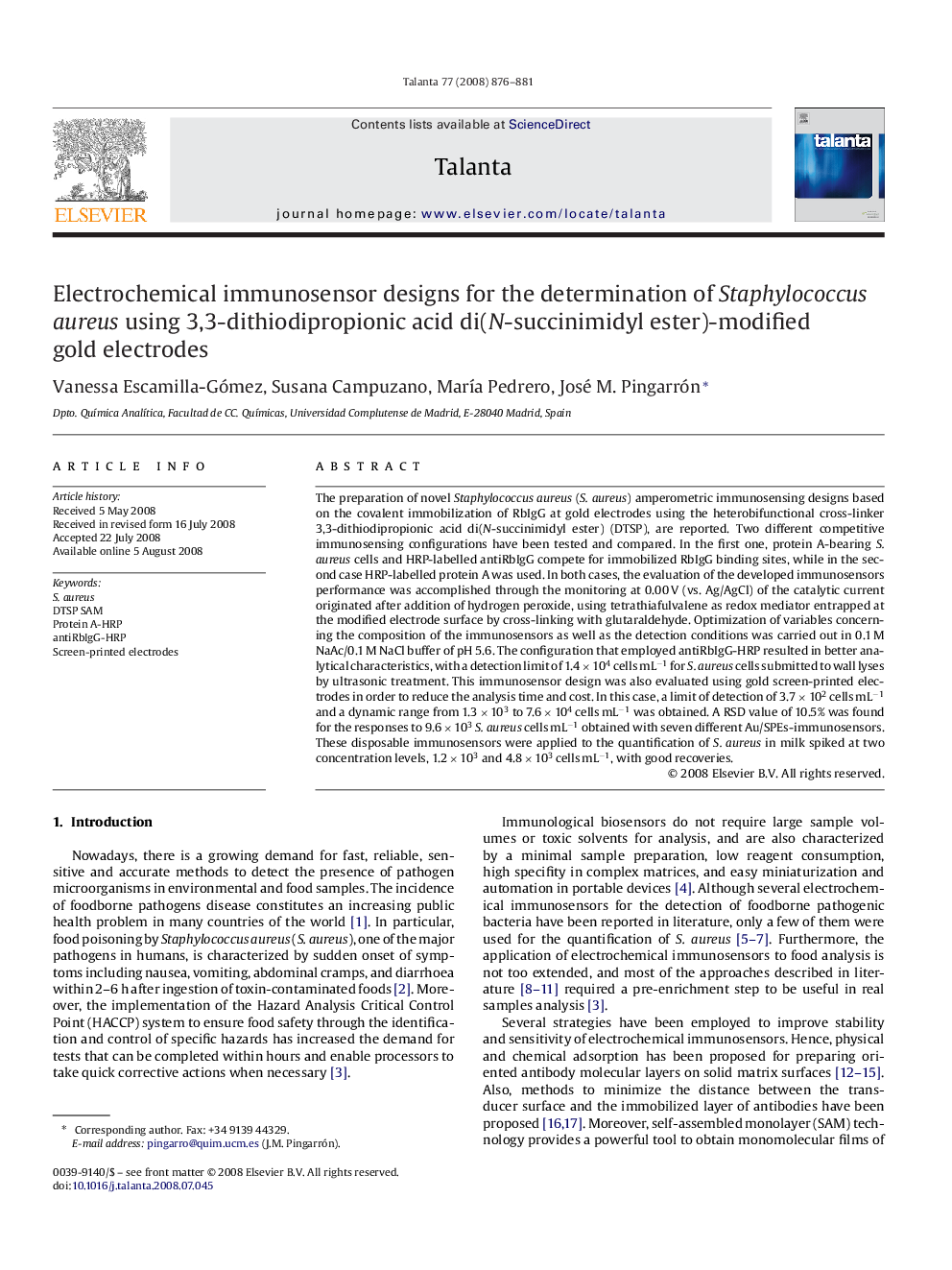| Article ID | Journal | Published Year | Pages | File Type |
|---|---|---|---|---|
| 1243151 | Talanta | 2008 | 6 Pages |
The preparation of novel Staphylococcus aureus (S. aureus) amperometric immunosensing designs based on the covalent immobilization of RbIgG at gold electrodes using the heterobifunctional cross-linker 3,3-dithiodipropionic acid di(N-succinimidyl ester) (DTSP), are reported. Two different competitive immunosensing configurations have been tested and compared. In the first one, protein A-bearing S. aureus cells and HRP-labelled antiRbIgG compete for immobilized RbIgG binding sites, while in the second case HRP-labelled protein A was used. In both cases, the evaluation of the developed immunosensors performance was accomplished through the monitoring at 0.00 V (vs. Ag/AgCl) of the catalytic current originated after addition of hydrogen peroxide, using tetrathiafulvalene as redox mediator entrapped at the modified electrode surface by cross-linking with glutaraldehyde. Optimization of variables concerning the composition of the immunosensors as well as the detection conditions was carried out in 0.1 M NaAc/0.1 M NaCl buffer of pH 5.6. The configuration that employed antiRbIgG-HRP resulted in better analytical characteristics, with a detection limit of 1.4 × 104 cells mL−1 for S. aureus cells submitted to wall lyses by ultrasonic treatment. This immunosensor design was also evaluated using gold screen-printed electrodes in order to reduce the analysis time and cost. In this case, a limit of detection of 3.7 × 102 cells mL−1 and a dynamic range from 1.3 × 103 to 7.6 × 104 cells mL−1 was obtained. A RSD value of 10.5% was found for the responses to 9.6 × 103S. aureus cells mL−1 obtained with seven different Au/SPEs-immunosensors. These disposable immunosensors were applied to the quantification of S. aureus in milk spiked at two concentration levels, 1.2 × 103 and 4.8 × 103 cells mL−1, with good recoveries.
